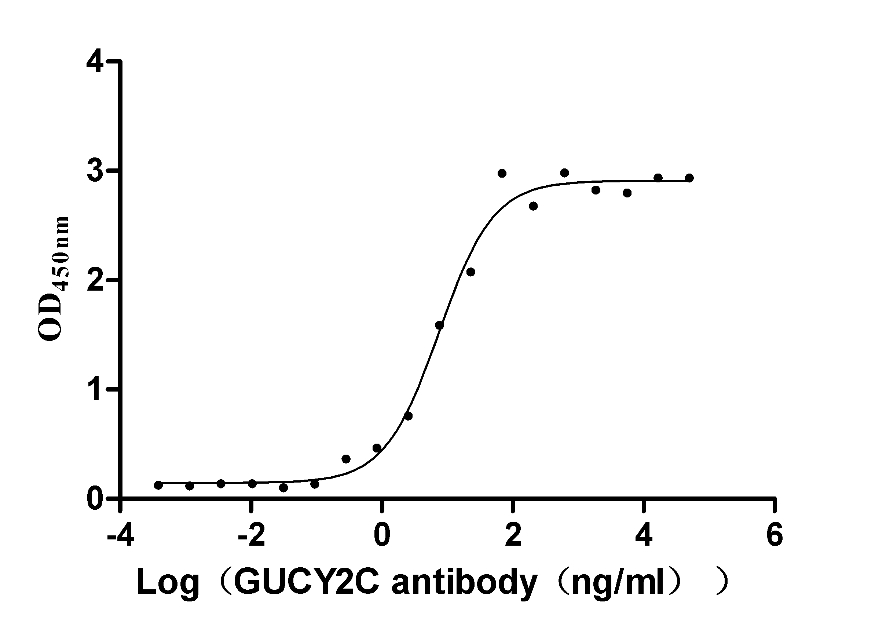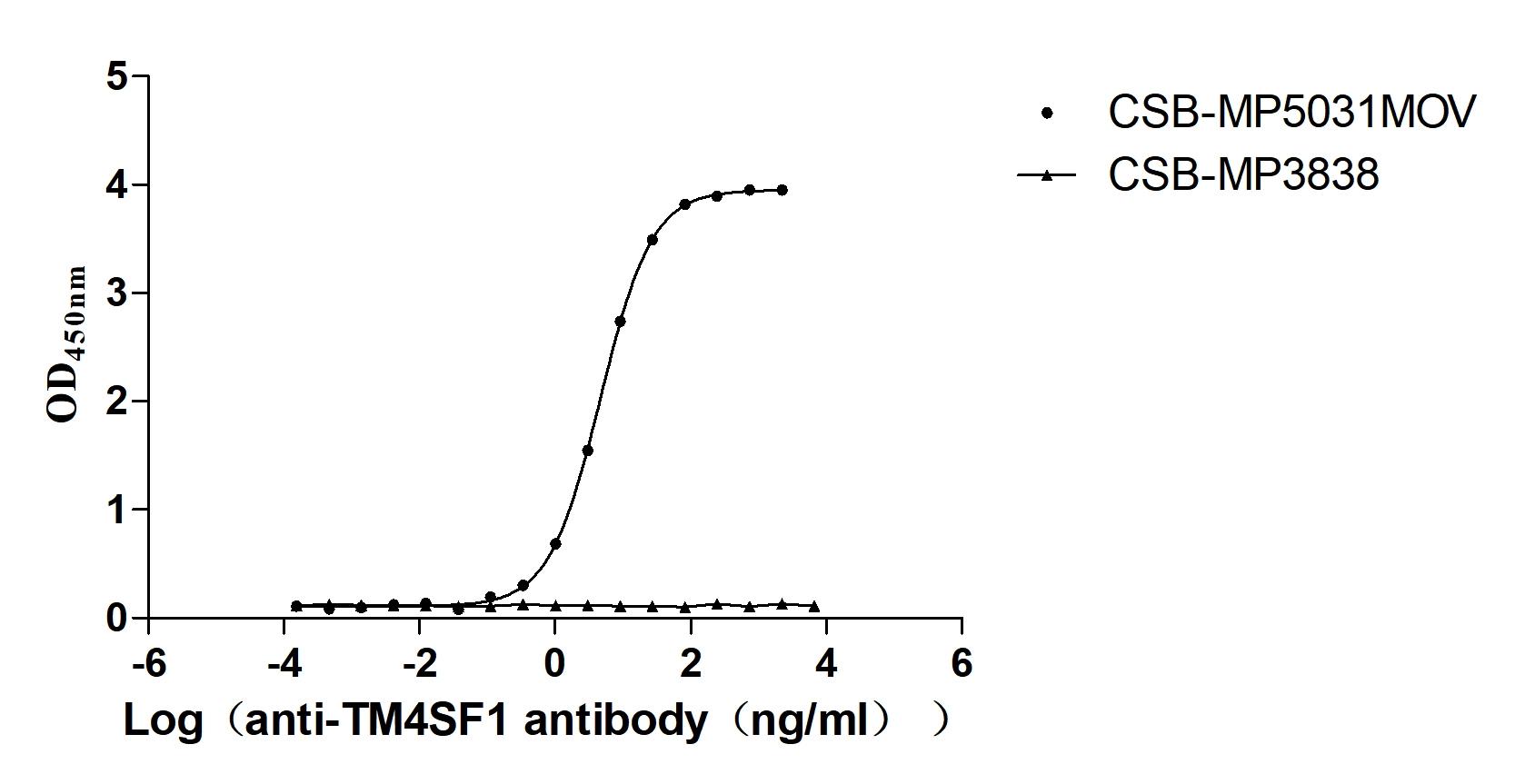Recombinant Mouse C-C chemokine receptor type 7 (Ccr7), partial
-
货号:CSB-YP004846MO1
-
规格:
-
来源:Yeast
-
其他:
-
货号:CSB-EP004846MO1
-
规格:
-
来源:E.coli
-
其他:
-
货号:CSB-EP004846MO1-B
-
规格:
-
来源:E.coli
-
共轭:Avi-tag Biotinylated
E. coli biotin ligase (BirA) is highly specific in covalently attaching biotin to the 15 amino acid AviTag peptide. This recombinant protein was biotinylated in vivo by AviTag-BirA technology, which method is BriA catalyzes amide linkage between the biotin and the specific lysine of the AviTag.
-
其他:
-
货号:CSB-BP004846MO1
-
规格:
-
来源:Baculovirus
-
其他:
-
货号:CSB-MP004846MO1
-
规格:
-
来源:Mammalian cell
-
其他:
产品详情
-
纯度:>85% (SDS-PAGE)
-
基因名:
-
Uniprot No.:
-
别名:Ccr7; Cmkbr7; Ebi1; Ebi1h; C-C chemokine receptor type 7; C-C CKR-7; CC-CKR-7; CCR-7; Epstein-Barr virus-induced G-protein coupled receptor 1; EBI1; EBV-induced G-protein coupled receptor 1; MIP-3 beta receptor; CD antigen CD197
-
种属:Mus musculus (Mouse)
-
蛋白长度:Partial
-
蛋白标签:Tag type will be determined during the manufacturing process.
The tag type will be determined during production process. If you have specified tag type, please tell us and we will develop the specified tag preferentially. -
产品提供形式:Lyophilized powder
Note: We will preferentially ship the format that we have in stock, however, if you have any special requirement for the format, please remark your requirement when placing the order, we will prepare according to your demand. -
复溶:We recommend that this vial be briefly centrifuged prior to opening to bring the contents to the bottom. Please reconstitute protein in deionized sterile water to a concentration of 0.1-1.0 mg/mL.We recommend to add 5-50% of glycerol (final concentration) and aliquot for long-term storage at -20℃/-80℃. Our default final concentration of glycerol is 50%. Customers could use it as reference.
-
储存条件:Store at -20°C/-80°C upon receipt, aliquoting is necessary for mutiple use. Avoid repeated freeze-thaw cycles.
-
保质期:The shelf life is related to many factors, storage state, buffer ingredients, storage temperature and the stability of the protein itself.
Generally, the shelf life of liquid form is 6 months at -20°C/-80°C. The shelf life of lyophilized form is 12 months at -20°C/-80°C. -
货期:Delivery time may differ from different purchasing way or location, please kindly consult your local distributors for specific delivery time.Note: All of our proteins are default shipped with normal blue ice packs, if you request to ship with dry ice, please communicate with us in advance and extra fees will be charged.
-
注意事项:Repeated freezing and thawing is not recommended. Store working aliquots at 4°C for up to one week.
-
Datasheet :Please contact us to get it.
相关产品
靶点详情
-
功能:Receptor for the MIP-3-beta chemokine.
-
基因功能参考文献:
- Data report that CCR7 mediates CD11c+ cell migration from the CNS parenchyma to the meningeal lymphoid vessels and eventually to the deep cervical lymph nodes during neuroinflammation. In the absence of CCR7, dendritic cells are retained in the CNS and exacerbate neuroinflammation. PMID: 28216674
- Conditions for optimal dendritic cells guidance are perfectly provided by the CCL21 gradients measured in vivo. Furthermore, CCR7 signal termination by the G-protein-coupled receptor kinase 6 (GRK6) is crucial for haptotactic but dispensable for chemotactic CCL21 gradient sensing in vitro and confirm those observations in vivo. PMID: 28457871
- CCR7 deficiency results in apoptosis of Sirpa- dendritic cells, which is counterbalanced by expansion of immature Sirpa+ dendritic cells that efficiently induce Treg generation. PMID: 28978470
- These data show that CCR7-CCL19/CCL21 axis facilitates retention CD4(+) T lymphocytes at the site of collateral artery remodeling, which is essential for effective arteriogenesis. PMID: 28275068
- Results demonstrated that the deletion of CCR7 significantly decreases levels of activated Notch1, and provide evidence that crosstalk between CCR7 and Notch1 promotes stemness in mammary cancer cells ultimately potentiating mammary tumor progression. PMID: 28137279
- CCR7 deficiency lead to accumulation of CD8+ adipose tissue leukocytes, which was further exacerbated by HFD feeding. PMID: 27655794
- in the current study, we used interval mapping to validate a locus on Chr 15, named Ity8, linked to Salmonella resistance in AcB60 mice. Global gene expression analysis during infection identified AcB60-specific expression of genes involved in Ccr7 signaling, including downstream effector Mapk11 (mitogen-activated protein kinase 11), located within the Ity8 interval, and representing a potential positional candidate gene PMID: 27913859
- Taken together, these data suggest that CCR7 biases memory CD8 T cells toward IL-7-dependent niches over IL-15-dependent niches, which provides insight into the homeostatic regulation of different memory T-cell subsets. PMID: 27385825
- Prominent mucosal immune responses in CCR7-deficient mice increased the efficiency of bacteria clearance from the FRT(female reproductive tract) while reducing tissue-associated inflammation and pathology; increased numbers of lymphocytes within the FRT result in pathogen clearance with reduced immune-mediated pathology PMID: 28801359
- CCR7 is required to mount a robust immune response against enteropathogenic Y. pseudotuberculosis by promoting Th17-like responses in mesenteric lymph nodes. PMID: 28329174
- CCR7 overexpression and RelB knockdown (KD) in imDCs improve skin-graft survival in a murine skin-transplantation model. Transfection with Ad-CCR7 and RelB KD in imDCs may be an effective approach inducing immune tolerance, thus being potentially valuable for inhibiting allograft rejection. PMID: 28578354
- data point to Ccr7 as a critical host defense restriction factor limiting neuroinflammation during acute West Nile virus infection PMID: 28356527
- The results suggest that CCR7 plays a causal role in maintaining innate and adaptive immunity in obesity. PMID: 27207557
- these data indicate that CCR7 and BTLA cooverexpression imparts an intermediate immune phenotype in mmature dendritic cells when compared to that in CCR7- or BTLA-expressing counterparts that show a more immunocompetent or immunotolerant phenotype PMID: 28393074
- Results suggest that baicalin exerts an inhibitory effect on airway inflammation, and this effect may be associated with the inhibition of CCR7 and its ligands, CCL19 and CCL21, as well as on the nuclear factor-Kappa B (NF-kappaB) pathway in a mouse model of asthma. PMID: 27666000
- This study reveals a role for CCR7 in limiting Treg recirculation back to the thymus and enables separation of the mechanisms controlling Treg production and thymic recirculation. PMID: 26832402
- expression on antiviral T cells is mandatory to prevent lethal neuroinflammatory disease PMID: 26921107
- data reveal that CCR7 plays multifaceted roles in regulating collecting vessel permeability and fibrosis, with one of the key players being IRF4-dependent DCs. PMID: 26999610
- the graft site microenvironment plays a critical role in alloimmunity by determining DC trafficking through the CCR7-CCL19/21 axis. PMID: 27031839
- reduced expression in mononuclear inflammatory cells isolated from the brain during active stage of experimental autoimmune encephalomyelitis PMID: 25957582
- The results highlight a novel role of CCR7 in regulating effector CD8 T cell migration in the spleen and demonstrate differential requirement of CCR7 for primary and secondary CD8 T cell responses to infection. PMID: 26500349
- mucosal draining lymph nodes express CCR7, which has a role in trafficking of RORgamma innate lymphoid cells PMID: 25575242
- results demonstrate a contribution of CCR7 to STAP-2-dependent enhancement of BCR-ABL-mediated cell growth in Ba/F3 cells PMID: 26102025
- CCR7 increases the secretion of nitric oxide and modulates the T cell immune response. PMID: 25549354
- Results suggest that Mfn2 and OPA1 are upregulated during bone marrow progenitor differentiation and promote the migration of immature dendritic cells by regulating the expression of CCR7. PMID: 25387754
- CCR7 regulates the intestinal TH1/TH17/Treg balance during Crohn's-like murine ileitis. PMID: 25637591
- Rescue with both CCR7 and ICAM-1 reverses impaired DC homing to lymph nodes in vivo when FOXO1 is deleted. PMID: 25786691
- Ccr7 is gradually silenced during the differentiation of monocytes to monocyte-derived dendritic cells. PMID: 25297875
- CCR7 is required for a protective immune response to intracellular L. major infection. PMID: 24205367
- CCR7 guides migration of mesenchymal stromal cells to secondary lymphoid organs and thus highly intensify their in vivo immunomodulatory effects. PMID: 24496849
- The involvement of DCs and their expression of CCR7 in corneal and ocular surface diseases such as in ocular allergy, dry eye disease, immune rejection and more, are also reviewed here. PMID: 24725321
- CCR7 directs the recruitment of T cells into inflamed pancreatic islets of nonobese diabetic (NOD) mice PMID: 24687731
- Results suggest reduced interest in social novelty in response to maternal separation in CCR7-/-, but not wild-type mice PMID: 24503116
- The results of this study suggest that ccr7 may play a role in cognition and learning behaviour, as well as anxiety and other behaviours. PMID: 24333375
- Novel roles for CCR7 are identified during intrathymic T cell development, highlighting its importance in enabling multiple alphabetaT cell lineages to access the adult thymic medulla. PMID: 24990081
- Immunohistology revealed that CCR7 and CCR9 expression was important for gammadelta T-cell localization within thymic medulla or cortex, respectively PMID: 24500801
- results indicate that CCR7 must be expressed on dendritic cells, as well as peripheral cells, to allow an efficient immune response to Leishmania major PMID: 24410820
- Post-thrombotic vein wall remodeling is impaired in CCR7(-/-) mice, with a profibrotic phenotype, is dependent on the thrombotic mechanism, and is mediated by circulating CCR7(+) cells. PMID: 24311382
- CCR7 provides localized access to IL-2 and defines homeostatically distinct regulatory T cell subsets. PMID: 24378538
- TSLP activated a subset of CD11b(+) DCs in the skin to produce CCL17, upregulate CCR7, and migrate to the draining lymph node to initiate Th2 differentiation. PMID: 24123684
- Chromatin immunoprecipitation sequencing revealed the transcription factor Tcf7 and the chemokine receptor Ccr7 as Foxo1-bound target genes, which have critical functions in central-memory T cell differentiation and trafficking. PMID: 23932570
- our findings do not support the notion that CCR7 plays a discernable role in the trafficking of Ag-experienced CD4 T cells to the lymph nodes PMID: 23935190
- Genetic deletion of Ccr7 exacerbates atherosclerosis by increasing T cell accumulation in atherosclerotic lesions. PMID: 23180724
- Data indicate that naive lung CD4 cells supply the draining lymph nodes through a CD62L-independent, CCR7-dependent pathway. PMID: 23319636
- Exposure to CCR7 in a model of contact hypersensitivity following sublethal total body irradiation results in diminished immunosurveillance in the skin, a mechanism which could render the host more susceptible to pathogens. PMID: 23002435
- these data imply a causal link between CCR7 expression, IL-1beta level, and Na malabsorption owing to altered ENaC expression and diarrhea. PMID: 22395421
- Phosphatidylinositol 3-kinase and NF-kappa B signaling pathways play a critical role in CCR7-mediated IL-23 production by murine dendritic cells. PMID: 22591694
- Plasmacytoid dendritic cells (pDCs) trafficking to the splenic white pulp require CCR7 signaling. PMID: 22634622
- CCR7 expression contributes to the immunopathogenesis of allergic conjuctivitis, thereby allowing significant inhibition of this experimental condition via topical CCR7 antibody blockade. PMID: 22507838
- Cell sorting highlighted the involvement of CD11c(+) cells in the CCR7-independent transport. PMID: 22622847
收起更多
-
亚细胞定位:Cell membrane; Multi-pass membrane protein.
-
蛋白家族:G-protein coupled receptor 1 family
-
数据库链接:
KEGG: mmu:12775
STRING: 10090.ENSMUSP00000099423
UniGene: Mm.2932




















